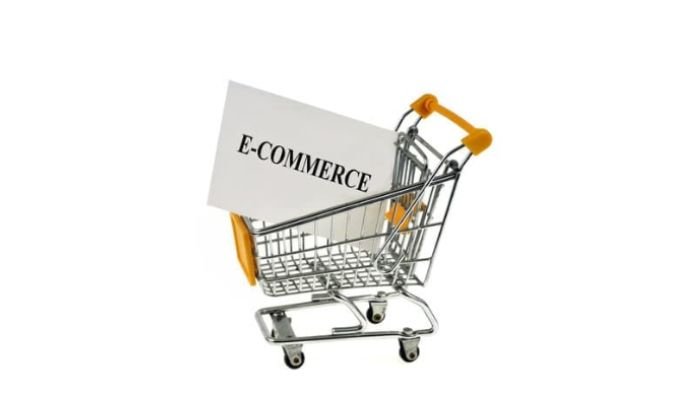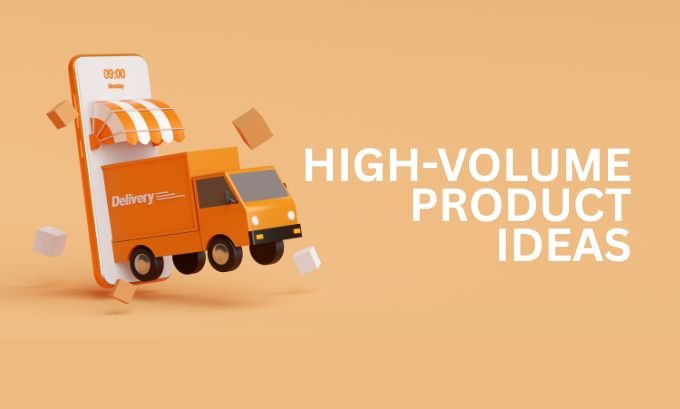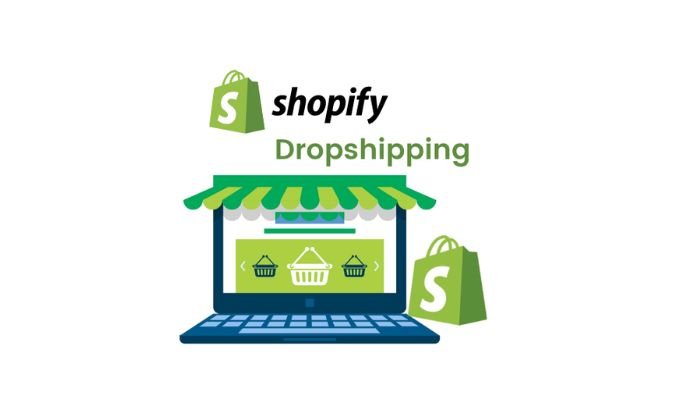Starting an online business can feel like a huge step, but it’s more achievable than ever. The best e-commerce business ideas for beginners often involve finding popular products you can source cheaply and sell for a healthy profit. By understanding the market and choosing the right platform, you can build a successful online store from the ground up, even with a small budget.
This guide breaks down everything you need to know. We will explore proven business models, analyze real product examples, and demystify the costs involved. You will learn how to find trending products, understand platform fees, and ultimately choose an idea that sets you up for success.
Table of Contents
Finding Your Niche: The Best E-commerce Business Ideas for Beginners
The secret to a great e-commerce business is finding the right products to sell. You don’t need a revolutionary invention. Instead, focus on items that solve a common problem, are in high demand, and offer good profit margins. The goal is to find a sweet spot between what customers want and what you can affordably source and sell.
My Journey into E-commerce Product Research
When I first started in e-commerce, I was overwhelmed. I spent weeks looking for the “perfect” product. I assumed I needed something completely new. My breakthrough came when I shifted my focus from invention to observation. I started analyzing what was already selling well on major platforms like Amazon.
My first experiment was simple. I noticed a basic cockroach repellent device getting a steady stream of orders. It was a small electronic plug-in that emits a sound to deter pests. On Amazon, it was selling for around ₹299 (about $3.60 USD) and getting about 300 orders a month. That’s nearly ₹90,000 (around $1,080) in monthly revenue for one simple product.
Curiosity led me to sourcing platforms like Indamar, an Indian B2B marketplace. I was shocked to find the exact same device listed for just ₹30 (about $0.36). This ten-fold price difference was my “aha!” moment. It showed me the immense profit potential in finding low-cost, high-demand items. This experience taught me that success isn’t about reinventing the wheel. It’s about finding a wheel that’s already rolling and figuring out how to sell it better.
This simple research process became my blueprint. I learned to identify trending products, compare B2C and B2B pricing, and calculate potential profits after fees. It’s a strategy anyone can use to find their first winning product.
Strengths of This Product Sourcing Strategy
- Low Barrier to Entry: You don’t need a large upfront investment. Sourcing low-cost items means you can start with minimal capital.
- Proven Demand: By focusing on products already selling, you eliminate the guesswork. The market has already validated the idea for you.
- High Profit Margins: As seen with the repellent device, sourcing directly can lead to significant markups and healthy profits.
- Scalability: Once you find one successful product, you can replicate the process to expand your product line and grow your business.
Areas for Improvement and Potential Risks
- High Competition: If a product is selling well, others will notice. You may find yourself competing with established sellers who have better pricing or more reviews.
- Finding Reliable Suppliers: The quality and reliability of suppliers on B2B platforms can vary. It’s crucial to vet suppliers and order samples before making a large purchase.
- Marketing Costs: Just listing a product isn’t enough. You will likely need to invest in advertising, especially on a competitive platform like Amazon, to get your product noticed.
- Market Saturation: Trends fade. A product that’s hot today might be obsolete tomorrow. Continuous research is necessary to stay ahead.

Unpacking the Costs: How E-commerce Platforms Affect Your Profit
Choosing where to sell is just as important as choosing what to sell. Different platforms have unique fee structures that can significantly impact your bottom line. Understanding these costs is essential for pricing your products correctly and ensuring your business is profitable.
Platforms like Amazon and Shopify are two of the most popular choices for beginners, but they operate on very different models.
Understanding the Amazon Commission Structure
Amazon gives you access to a massive audience, but it comes at a price. The platform charges several fees, which you must factor into your pricing. The Amazon commission structure varies based on the product category and selling price.
Let’s break down the typical fees for a seller in India, which illustrates a common model many global marketplaces use:
- Referral Fee (Commission): This is a percentage of the total sale price. To compete with other platforms, Amazon has introduced 0% commission for products priced under ₹300 in certain markets. For higher-priced items, this fee can range from 5% to over 15%. For example, a laptop table might have a 15% commission.
- Closing Fee: This is a fixed fee charged on every sale. As of September 2025, for products under ₹300, this fee is ₹6. It increases for higher-priced items.
- Shipping Fee (Fulfillment by Amazon – FBA): If you use FBA, Amazon handles storage, packing, and shipping. This fee depends on the product’s size and weight. A standard item under 500g might cost around ₹69 for shipping.
- GST (Goods and Services Tax): In countries like India, Amazon also charges GST (an 18% tax) on the fees it collects from you (the commission, closing fee, etc.). This is an important detail, as this tax can often be claimed back as an input tax credit, but it affects your initial cash flow.
A Real-World Profit Calculation
Let’s revisit the cockroach repellent device.
- Selling Price: ₹299
- Product Cost (from Indamar): ₹30
- Commission Fee (under ₹300): ₹0
- Closing Fee: ₹6
- Shipping Fee: ₹69
- GST on Fees (approx. 18% of ₹75): ₹13.50
Total Fees: ₹6 + ₹69 + ₹13.50 = ₹88.50
Bank Settlement: ₹299 – ₹88.50 = ₹210.50
Net Profit: ₹210.50 (Settlement) – ₹30 (Product Cost) = ₹180.50 per unit
Even after all fees, the profit margin is huge. Selling 300 units a month would yield over ₹54,000 (approx. $650) in net profit from just one low-cost product. This is a powerful demonstration of how the best e-commerce business ideas for beginners often lie in high-margin, low-cost goods.

Exploring High-Volume Product Ideas
While low-cost items are great, you can also find success with products at different price points. The key is to understand the balance between profit margin and sales volume. Some products sell in massive quantities but offer thinner margins, while others sell less frequently but provide a bigger profit per sale.
Case Study 1: The Self-Adhesive Storage Organizer
A self-adhesive storage organizer for kitchens and bathrooms is a perfect example of a mid-range winner. These clever corner shelves are easy to install and solve a common household storage problem.
On Amazon, a popular version sells for ₹299 and achieves an incredible 5,000 orders per month. That’s a monthly revenue of nearly ₹15 lakh (about $18,000). On Indamar, similar organizers can be sourced for ₹75-₹85.
Using our profit calculation:
- Bank Settlement (approx.): ₹210.50
- Product Cost: ₹75
- Gross Profit Per Unit: ₹135.50
Even if we conservatively estimate a net profit of just ₹50 per unit after marketing, packaging, and other overheads, the total monthly profit is staggering:
5,000 units x ₹50/unit = ₹2,50,000 (approx. $3,000) per month.
This example shows that you don’t need to be the original seller. By finding a better design, offering a unique color, or creating a bundled deal, you can carve out a piece of a massive market.
Case Study 2: The Laptop Table
Now, let’s look at a high-volume, low-margin product: the foldable laptop table. A basic model selling for ₹599 might generate a mind-boggling 10,000 orders a month. This translates to an astronomical monthly revenue of ₹59.9 lakh (over $70,000).
However, the profit margins are much tighter.
- Selling Price: ₹599
- Amazon Commission (15%): ₹89.85
- Closing Fee (₹501-₹1000 range): ₹34
- Shipping & Other Fees (estimate): ₹80
Total Fees are roughly ₹200-₹220 per unit. If the table costs ₹300 to source, the net profit might only be ₹80-₹100 per unit. But at 10,000 units, that’s still a monthly profit of ₹8-₹10 lakh ($9,600-$12,000).
Comparison of E-commerce Product Strategies
| Product Type | Selling Price | Sourcing Cost | Margin | Sales Volume | Pros | Cons |
|---|---|---|---|---|---|---|
| Cockroach Repellent | Low ($3.60) | Very Low ($0.36) | Very High | Low | Easy to start, low risk | Low revenue per unit |
| Storage Organizer | Low ($3.60) | Low ($0.90) | High | High | High profit, high demand | High competition |
| Laptop Table | Medium ($7.20) | Medium ($3.60) | Low | Very High | Massive revenue potential | Thin margins, high ad spend |
This table shows there’s no single “best” strategy. Your choice depends on your risk tolerance, starting capital, and business goals.

Alternative E-commerce Models: Dropshipping with Shopify
Not everyone wants to handle inventory. If buying products in bulk, storing them, and shipping them sounds like a hassle, dropshipping is an excellent alternative.
What is Dropshipping?
Dropshipping is a business model where you sell products online without ever holding the inventory yourself. When a customer places an order on your store, you forward that order to a third-party supplier, who then ships the product directly to the customer. You are the storefront, but the supplier handles all the logistics.
Why Shopify is a Great Platform for Dropshipping
Shopify is an e-commerce platform that allows you to build your own online store from scratch. It’s incredibly user-friendly and integrates seamlessly with dropshipping apps like Oberlo, Spocket, and CJDropshipping.
With Shopify, you have complete control over your brand, website design, and customer experience. Unlike selling on Amazon, you aren’t competing side-by-side with other sellers on the same product page. You build your own brand identity.
Strengths of the Shopify + Dropshipping Model
- Low Startup Costs: Since you don’t buy inventory upfront, the initial investment is minimal. Your main costs are your Shopify subscription and marketing.
- Wide Product Selection: You can offer a vast range of products from various suppliers without worrying about storage space.
- Flexibility: You can run your business from anywhere with an internet connection.
- Brand Building: You own the customer relationship and can build a loyal following through email marketing and social media.
Areas for Improvement and Potential Risks
- Lower Profit Margins: Because you are buying products one by one from a supplier (who also takes a cut), your margins are typically lower than buying in bulk.
- Supplier Reliability: You are dependent on your supplier for product quality and shipping times. A bad supplier can ruin your store’s reputation.
- Marketing is All on You: Unlike Amazon, Shopify stores don’t have built-in traffic. You are responsible for driving every single visitor to your site through social media, SEO, or paid ads.
- Complex Customer Service: If a customer has an issue with a product or shipment, you are the point of contact. You have to coordinate with the supplier to resolve it.
FAQ: Answering Your Top E-commerce Questions
Here are direct answers to some of the most common questions beginners have about starting an e-commerce business.
1. What is the easiest e-commerce business to start?
The easiest e-commerce business to start is dropshipping using a platform like Shopify. It requires the lowest initial investment because you don’t need to purchase inventory upfront. You can set up a store and start selling products in just a few days.
2. How much money do you need to start an e-commerce business?
You can start a dropshipping business for as little as a few hundred dollars to cover your Shopify subscription and initial marketing ads. For a private label business on Amazon, you should budget at least $1,500–$3,000 for inventory, fees, and marketing.
3. Is it more profitable to sell on Amazon or Shopify?
It depends on your business model. Amazon can be more profitable for sellers who find high-margin trending products and can navigate the competition, thanks to its huge customer base. Shopify can be more profitable for brands that build a loyal following and can drive their own traffic, as you don’t pay commission on each sale.
4. How do I find trending products to sell?
You can find trending products by using tools like Google Trends, exploring best-seller lists on Amazon, and monitoring social media platforms like TikTok and Instagram. Also, look for products that solve everyday problems, like the self-adhesive storage organizer.
5. What is the biggest challenge for e-commerce beginners?
The biggest challenge is marketing and getting your first customers. Many beginners focus too much on the product and not enough on how they will attract buyers. Whether you sell on Amazon or Shopify, you need a solid marketing plan.
6. Do I need to register a company to sell online?
In most countries, you can start as a sole proprietor. However, as your business grows, forming an LLC or another legal entity is highly recommended to protect your personal assets. You will also need to understand your local tax obligations, such as collecting GST or sales tax.
Conclusion: Your Path to E-commerce Success
Choosing one of the best e-commerce business ideas for beginners comes down to aligning your goals with the right strategy.
If you have a small budget and want to learn the ropes, starting a dropshipping store on Shopify is a fantastic, low-risk option. If you’re willing to invest more upfront and want to tap into a massive, ready-made audience, sourcing a high-margin trending product to sell on Amazon can be incredibly lucrative.
The key takeaways are:
- Research is everything. Use platforms like Amazon to see what’s selling and sites like Indamar to find sourcing opportunities.
- Understand the numbers. Factor in all fees, including the Amazon commission structure and taxes like GST, to calculate your true profit.
- Don’t be afraid to start small. A simple product like a cockroach repellent device can be a profitable starting point.
- Choose your model wisely. Whether it’s high-volume, high-margin, or dropshipping, pick the path that fits your budget and risk appetite.
The world of e-commerce is full of opportunity. By taking a methodical approach, you can build a thriving online business. Your journey starts now.
Author Bio:
Ashwin Kumar is an e-commerce strategist and consultant with over 8 years of experience building and scaling profitable online stores on both Amazon and Shopify. After launching his first successful private label product in 2017, he has helped hundreds of entrepreneurs navigate the complexities of product sourcing, digital marketing, and brand building. Ashwin specializes in data-driven product research and demystifying platform algorithms to create sustainable growth for new sellers.
References:
- Amazon Services. (2025). Selling on Amazon Fee Schedule.
- Shopify Inc. (2025). Pricing and Plans.
- Statista. (2025). E-commerce Market Reports and Projections.
- Government of India, Central Board of Indirect Taxes and Customs. GST Acts and Rules.

